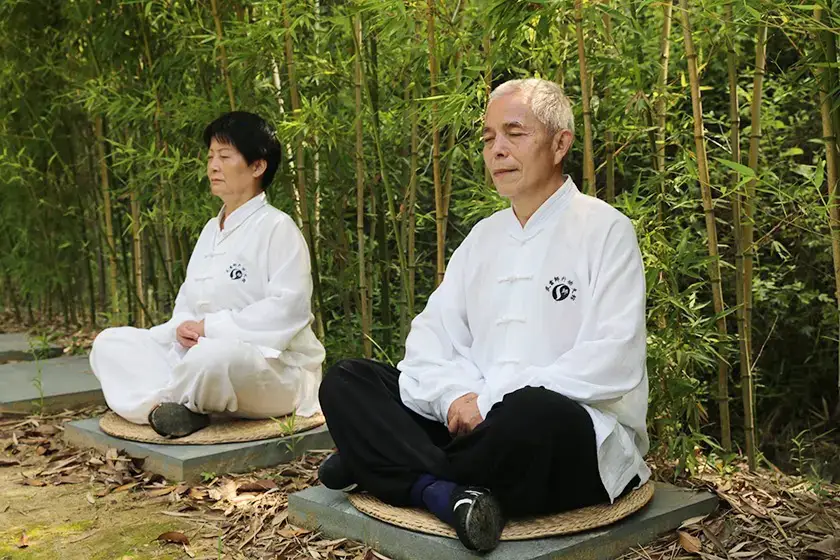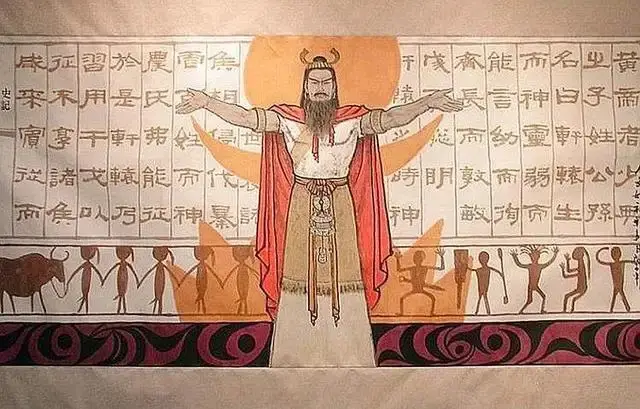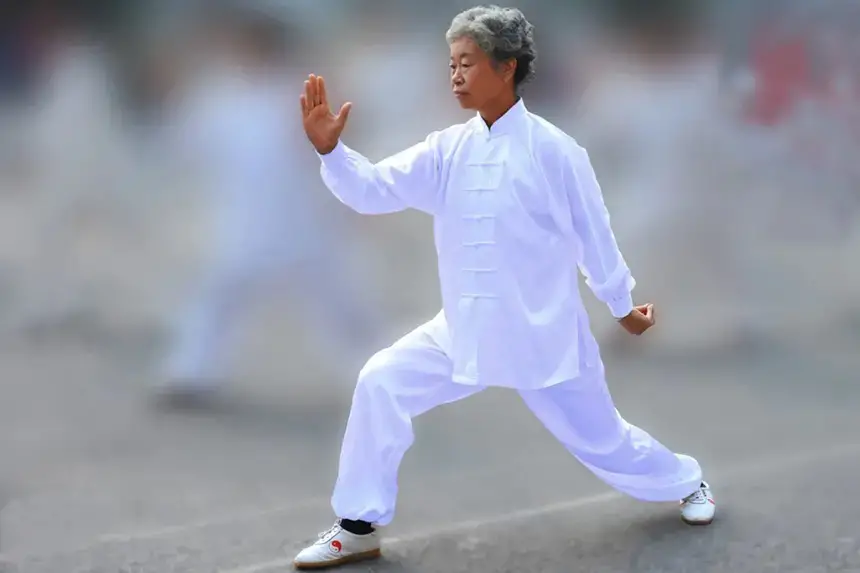when it comes to Qigong, there is numerous information revolving around it. Many people in the world are embracing Qigong in there their daily lives. Although, it is been used by many people across the world very few of them understand how Qigong came to being. In Asia and particularly the Chinese people viewed Qigong as a practice to be cultivated and balanced.
Qigong is an action that entails moving meditation deep rhythmic breathing, coordinating slow-moving meditation, and having a calm meditative state of mind. Currently, many people in the world practice Qigong as a form of recreation, self-healing, self-cultivation, alternative medicine, and training for martial arts. This article will put forward what qigong is, Qigong meditation, its origin, how to learn and do Qigong, what is good for and how effective it can be, and lastly compare Qigong with Tai Chi.
Definition of Qigong

Qigong is best described as a system of coordinated body posture as well as movement, breathing, and meditation that is mostly used for health, spirituality, and training in martial arts. Qi means energy while Gong means work or skill. Well, when these two words are combined to form Qigong and it highlights working to develop skills and energy.
The Qigong has taken the center stage of Chinese philosophy and is a huge part of their culture. With so much importance placed on the part of living energy. It led to the development of many methods of working with this energy, directing it, becoming aware of it, and gaining skills with it. The Chinese people applied this knowledge and skills to every pursuit of their life.
What is Qigong Meditation
Qigong meditation is the Chinese ancient healing practice that combines controlled breathing, swift and gentle movement and meditation that promotes good mental, spiritual and physical health. It translates to ‘master of one’s energy that combines two very important concepts of traditional Chinese medicine. That is the vital life force and the mastery or cultivation.
Qigong meditation is meant to cultivate the strength and energy of nature in one’s body to promote better spiritual, physical, and mental health. In ancient Chinese medicine poor health was a result of blocked energy that flows through the body. So, Qigong was highly believed to conserve and promote health by allowing energy to flow throughout your body.
There are two types of Qigong meditation namely active or dynamic Qigong and passive Qigong. Active Qigong entails intentional, active movements together with breathwork which enhances yang energy. The passive Qigong is focused on embracing yin energy by way of body stillness as well as mental cultivation of energy.
Qigong can be practiced internally with yourself or externally through a therapist. Benefits of Qigong meditation include increased balance, improve mental focus, lower levels of anxiety and stress, and reducing the risk of chronic disease.
History of Qigong

According to archeological evidence, it is believed that the first form of Qigong is linked to the ancient Shamanic meditative practices and gymnastics. For instance, the nearly 7000-year-old Neolithic vessel portrays a priest shaman in the posture of meditative practice together with gymnastic exercises. Shamanic rituals and ideas eventually evolved into Taoist beliefs which were later incorporated into the field of traditional Chinese medicine.
How old is Qigong?
The beginning of the earliest Qigong is well hidden within the mists of antiquity. The first type probably emerged naturally in the fields of ancient China. The documented history of Qigong dates back approximately 2500 years, however, Chinese historians and archeologists have found Qigong-like techniques dating 5000 years ago. Qigong has continued to undergo evolutionary development throughout the centuries.
Where did Qigong originate
The Qigong has its roots in ancient China. Many varieties of Qigong have developed within different sections of Chinese society. In traditional Chinese medicine, it was used for preventive and curative functions. In Confucianism, it was utilized to promote longevity as well as improve moral character. It was employed in Chinese martial arts to elevate self-defending abilities and lastly, it was used in Buddhism and Daoism as part of the meditative practice. Contemporary Qigong blends diverse and disparate traditions.
Who invented Qigong?
Liu Guizhen was the person who established the Name ‘Qigong” which to him referred to the system of Life preservation practices that he and his colleagues developed. This was based on Dao yin together with other philosophical traditions.
Liu Guizhen was a doctor by training and he used his family’s method of body cultivation to curing himself of different ailments. Mr. Guizhen then promoted his methods to be used in his patients and later on he published a book titled ‘Qi Gong liaofa shiyan’ to promote and popularize his successes. His ability to redefine without the use of philosophical and religious context made it accepted by the ruling government. The strong government support of Traditional Chinese medicine and the popularity of Liu’s book resulted in the formation of Qigong departments in hospitals and universities. This led to the institutional support for Qigong being started across China but this was carried out under tight control at the same time it had little access by the general public but it was encouraged in state-owned rehabilitation centers hospitals and universities.
When was Qigong created?
Going back as early as the 26th century B.C in the reign of Chinese Yellow Emperor Huangdi. While the system was not yet named many of the body’s qi had already been manifested, healed, and maintained for Chinese healers to understand. In the late 1940s through 1950s, the Chinese government attempted to integrate disparate Qigong approaches into a single coherent system. This was done to establish a firm scientific basis for the practice of Qigong.
In 1949 the name Qigong was established by doctor Liu Guizhen to refer to the life-preserving system
In 1958-1963 and 1966-1976, Qigong and other traditional Chinese medicine were put under tight control. However, its popularity grew during the reign of Deng and Jiang in 1976 through the 1990s with an increase in the number of practitioners.
How to learn Qigong
Well, learning Qigong is the most exciting thing you can do to health with your health needs. You can learn Qigong all by yourself through online platforms or in person by finding the place or school that meets your needs. To learn Qigong online, you will need to have your phone, laptop, or tablet with you, or you can use someone else’s device. Online learning is great since it complements in-person learning. the best part is that it allows you to review techniques at your own pace. Learning Qigong online gives you the privilege to scout for good teachers no matter where your location is. You should strive to do what you see in the video. To know if you are doing what is being done on the video record yourself while performing the technique.
You can as well learn Qigong in person in a school or through community programs. However, you should be in a position to understand what you’re your goals are, and what country are living in? are you ready to travel? When you have answers to these questions the next thing to do is to get to know what forms of Qigong you want to learn since there are different forms such as Buddhist, medical, martial, and Confucian.
Whichever model you choose to learn Qigong, you need to be disciplined and determined. Practice and more practice will help you achieve this goal.
How to do Qigong
Qigong is a popular form of exercise that is practiced in China and different parts of the world. It is a complete program for people’s health and wellness, it is a wonderful program for people who wants to stay fit and focused.
Qigong Posture
Posture is very important when it comes to doing Qigong. Your posture will either facilitates or restricts your qi, and also the effectiveness of other Qigong components such as relaxation or breathing. Your posture is likely to vary when you assume different positions for active and passive Qigong. Qigong’s theme requires effortless effort. It is a relaxed nonaction and a concept belonging to Daoism in which you can perform activities in your life with absolute minimum force. A good and correct posture will result in a feeling of amazing relaxation in everything.
Mastering breathing and concentration
There are many breathing techniques to be used in Qigong practice. You should breathe naturally and avoid forcing the breath but guiding it. you should also make sure your breathing is following a natural current. Use the following steps to build on your Qigong breathing.
Put your palms on your stomach.
Breathe through the nose while allowing your abdomen to expand and let the air fills your lungs.
Exhale and let your abdomen contract.
Imagine if this process that smoothly massages your internal organs and allows your lungs to take in more oxygen.
While doing this make sure you are not tensed or restricting the chest.
Standing meditation
It is very important to have a good standing meditation for your active or passive Qigong. You can practice this at any time of the day but is more appropriate during the early morning. Do at least 5 minutes of standing meditation when you wake up.
What is Qigong good for?

There has been positive feedback for people who have been practicing Qigong. Some of the benefits of Qigong include increased focus, improved balance, and flexibility, and lowered stress and anxiety. It is also good in reducing the risk of getting a certain chronic disease.
Other good things about Qigong are it will improve your appetite, increases your mental capacity, improves your sleep, increases your blood circulation, strengthens your body, mind, and heart, and improves your health in general.
Is Qigong effective?
Yes, it is. Qigong is very effective in helping individuals improve their general well-being. Studies done on Qigong have shown that this practice offers many benefits to individuals. Qigong is easy and safe and nearly anyone can try doing it. Qigong is effective in reducing symptoms of depression, lessening chronic fatigue, boosting immune response, and improving the wellness of people with cancer.
Qigong vs Tai Chi
while to some people, Qigong and Tai Chi look similar to each, there is some subtle difference between the two. So, how is Qigong and Tai chi compared? The major point of differentiation is in the movements. Well, Tai Chi focuses more on specific postures while Qigong entails more free flow. Tai Chi is practiced in several ways and many times it is known for its classical sequence of movements known as “Tai Chi Chuan” while the Qigong is composed of strings of movements, but the practice is more basic.
Qigong and Tai Chi foundations are very much similar and most of the time they are often mixed. However, the Qigong takes the simple nature of Tai chi since its movements do not require any special memorization.
Tai Chi is a martial art while Qigong is a wellness system. The Qigong is very well intertwined with the Chinese way of life while Tai Chi was developed by Chinese military heads and by Shaolin monks for self-defense and combat
Qigong has become part of life and it has been incorporated into the Chinese Health Plan and is practiced in hospitals, schools, and universities while Tai chi is more popular in the west and China.
Qigong is more adaptive as compared to Tai Chi which is complex and may not be performed by everybody.
So, if you are looking forward to relaxing, meditating, and a simple form of exercise, you can’t go wrong with either of the two. What is important is the way you approach your practice. Try to focus on how you feel from the inside rather than just coping with your instructor. You should also consider taking a deep breath before you begin, this will allow you to establish a connection between your body and the breath and it is the foundation of both practices.
Conclusion
Qigong is a powerful practice you can do to improve your mental and emotional health through meditation. Additionally, Qigong is a healing practice and can bring great benefits to individuals and communities. The good thing about Qigong is that it can be practiced by people of all ages and conditions. If you are looking to calm your body and mind you may want to give Qigong a try.